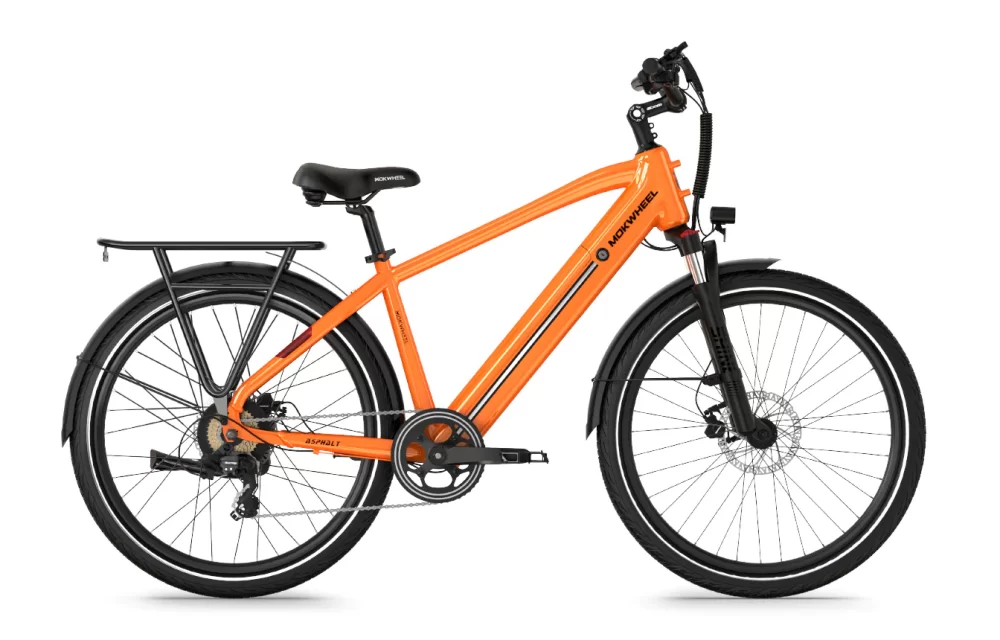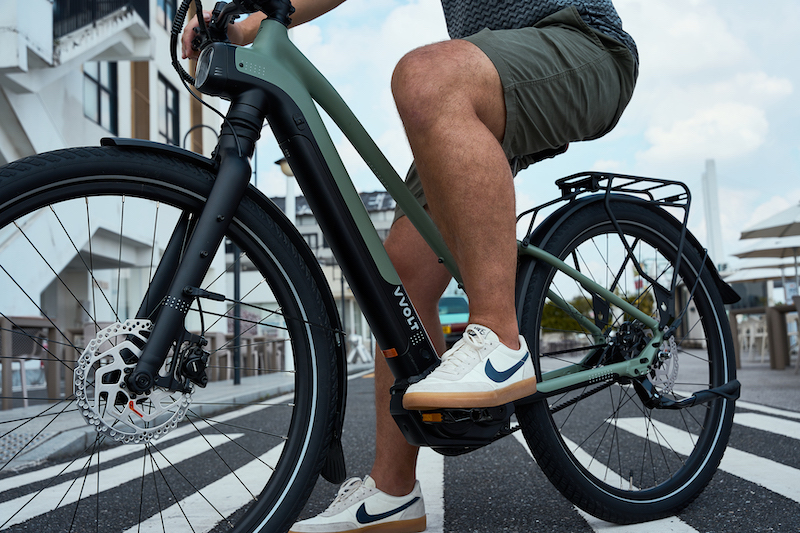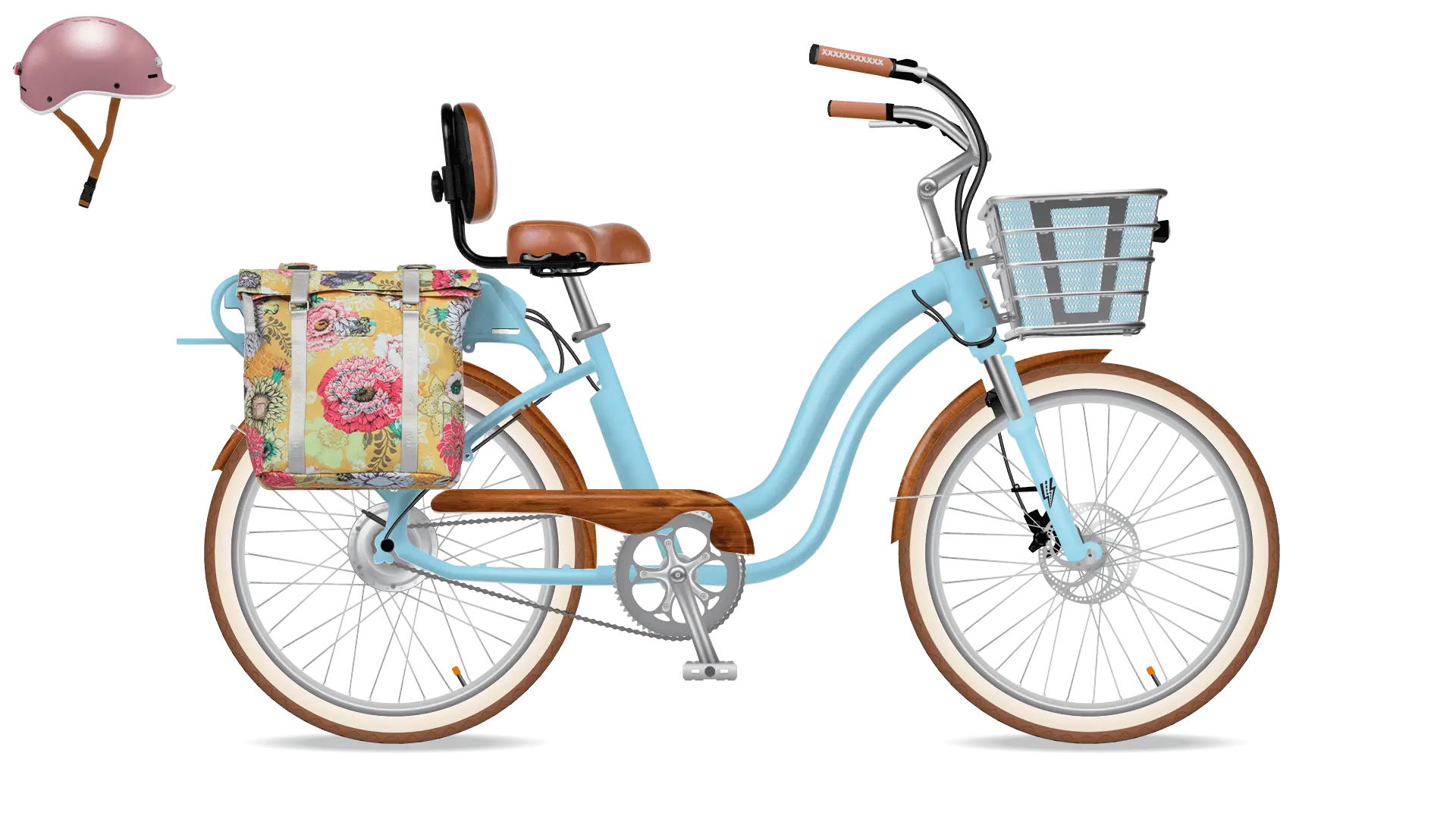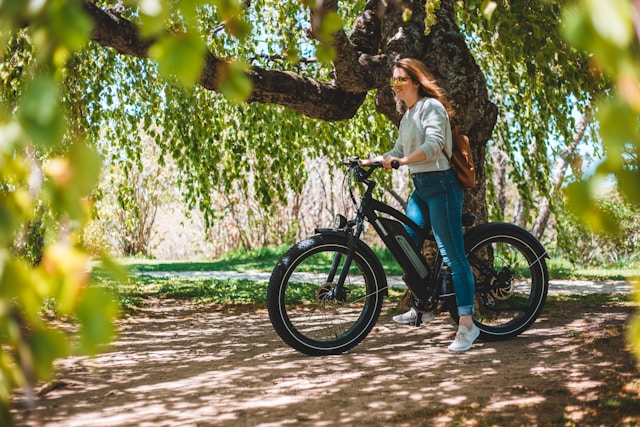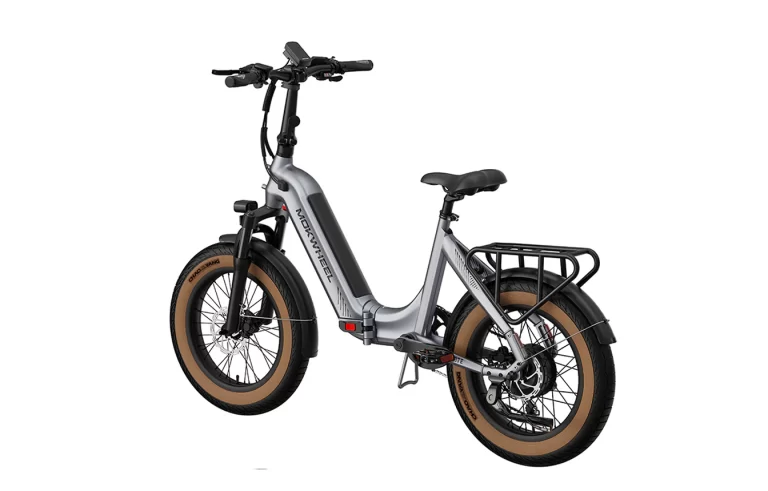Ebike Brakes Burning Up? Don’t Panic – Here’s How to Stay Cool!
Last Updated on June 25, 2024 by Kristina Grant
Electric bikes, or ebikes, have become a popular choice for transportation and recreation. They offer the benefits of traditional bicycles with the added assistance of an electric motor, making them easier to ride on hills and longer distances. But just like any other vehicle, ebikes rely on a crucial safety component: their brakes.
Imagine this: You’re cruising down a scenic mountain trail on your ebike, enjoying the fresh air and the thrill of the descent. Suddenly, you catch a whiff of a pungent burning rubber smell. You glance down and see a wisp of smoke emanating from your brakes. Your heart starts racing as you realize your brakes might be overheating – a situation that can significantly impair your stopping power and lead to a potentially dangerous situation.
Overheated brakes are a common concern for ebike riders, especially those who enjoy riding in hilly terrain or carrying heavier loads. While a certain level of heat generation is normal during braking, excessive heat can lead to a number of problems, including:
- Reduced braking power: Overheated brakes become less effective at stopping the bike, increasing your stopping distance and potentially leading to an accident.
- Glazed brake pads: High temperatures can cause the resin in the brake pads to harden, creating a glazed surface that reduces friction and further diminishes stopping power.
- Warped rotors: In the case of disc brakes, extreme heat can warp the rotors, causing them to rub against the pads and create a grinding noise, while also affecting braking performance.
By understanding the causes and consequences of overheating brakes, you can learn how to prevent this issue and ensure safe and enjoyable rides on your ebike.
Key Takeaways
This blog post unpacked the world of ebike brakes, delving into the causes of overheating and providing solutions to keep you riding safely. Here are 7 key takeaways to remember:
- Overheating is a Threat: Excessive heat buildup in your ebike brakes can significantly reduce stopping power and lead to warped rotors or damaged components.
- Friction is the Culprit: Braking relies on friction between the pads and rotors/rims to slow you down. This friction inevitably generates heat.
- Downhill Domination Takes a Toll: Long descents put a strain on your brakes as they constantly engage to control your speed, increasing the risk of overheating.
- Weight Matters: The heavier the combined weight of the rider and ebike, the more force is required to brake, leading to more heat generation.
- Worn Pads = Woes: As brake pads wear down, you need to apply more pressure to achieve the same stopping power, which translates to more heat.
- Contamination Creates Chaos: Oil, grease, or other contaminants on the brake pads can reduce friction and hinder braking, causing you to unknowingly apply more pressure and generate more heat.
- Listen to Your Brakes: Burning smell, smoke, decreased braking power, and mushy brake feel are all warning signs of overheating brakes that require immediate attention.
RELATED CONTENT – Troubleshooting Overheating Electric Bike Motors
Why Do Ebike Brakes Get Hot? Understanding the Friction Phenomenon
Ebikes, like their traditional counterparts, primarily rely on two types of braking systems: disc brakes and rim brakes. Both systems work by converting the kinetic energy of your ebike’s movement into heat through friction. This heat dissipation is what ultimately slows you down.
Disc Brakes:
Disc brakes are becoming increasingly popular on ebikes due to their superior stopping power, especially in wet conditions. They utilize a metal disc rotor attached to the hub of your wheel. When you squeeze the brake lever, a caliper equipped with brake pads clamps down on the rotor, creating friction that slows the wheel’s rotation.
Rim Brakes:
Rim brakes, the traditional workhorse of bicycles, are still found on some ebikes. They function by squeezing rubber brake pads onto the rim of the wheel, generating friction to slow you down.
The Heat Generation Equation:
Now, let’s delve into the factors that can contribute to excessive heat buildup in your ebike’s brakes:
- Long Descending Stretches: Ebikes excel at climbing hills with the assistance of the motor. However, on long descents, gravity takes over, and your brakes are constantly engaged to control your speed. This sustained braking action translates to a significant amount of friction being generated, leading to heat buildup in the brakes.
- Heavy Rider Weight: The heavier the combined weight of the rider and the ebike, the greater the force required to slow it down. This translates to increased pressure on the brakes, resulting in more friction and consequently, more heat generation.
- Worn Brake Pads: Brake pads are consumable components designed to wear down over time. As the pad material thins, the contact area with the rotor or rim decreases. This reduces braking efficiency and forces you to squeeze the levers harder to achieve the same stopping power. This extra effort translates to more heat being generated in the remaining pad material.
- Contaminated Brake Pads: Oil, grease, or other contaminants on the brake pads can create a slippery film that reduces friction and hinders braking performance. In this scenario, you might unknowingly apply more pressure to compensate for the reduced braking power, leading to increased heat generation.
- Improper Brake Adjustment: Improperly adjusted brakes can cause uneven pad wear or the pads to drag constantly on the rotor/rim. This continuous friction, even when you’re not actively braking, can significantly contribute to heat buildup.
RELATED CONTENT – Guide to Troubleshooting and Resetting Electric Bikes
Identifying Overheated Brakes:
While some level of heat generation is normal during braking, there are distinct signs that indicate your ebike’s brakes are overheating and require immediate attention. Recognizing these signs early can help you avoid potential safety hazards and prevent further damage to your braking system.
Universal Warning Signs:
Several telltale signs can alert you to overheating brakes, regardless of whether your ebike uses disc or rim brakes:
- Burning Smell: This is a classic indicator of overheating brakes. The intense heat can cause the brake pads or other components to emit a pungent burning rubber smell.
- Smoke: In extreme cases, you might even see wisps of smoke emanating from the brakes, a clear sign that the system is critically overheated.
- Decreased Braking Power: One of the most crucial warnings is a noticeable decrease in braking effectiveness. You might feel like you have to squeeze the levers harder than usual to achieve the same stopping power. This can be a dangerous situation, especially on descents.
- Mushy Brake Feel: Normally, your brake levers should offer a firm and responsive feel when squeezed. If the levers feel spongy or mushy, it could indicate that the brake fluid in a hydraulic disc brake system is boiling due to excessive heat, or that the mechanical components are malfunctioning in a rim brake system.
Identifying Overheating Based on Brake Type:
While the above signs apply to both disc and rim brakes, there can be some additional clues specific to each system:
- Disc Brakes: In addition to the universal warnings, excessively hot disc brakes might cause the rotors to warp. This can be identified by a pulsating sensation or grinding noise when braking, as the warped rotor rubs unevenly against the pads.
- Rim Brakes: With rim brakes, overheating can cause the rims to become noticeably hot to the touch. Additionally, the heat might cause the tire to soften or even become damaged in extreme cases.
By being aware of these warning signs and learning to identify them based on your specific ebike’s braking system, you can take immediate action to cool down your brakes and prevent further complications.
RELATED CONTENT – 5 Reasons Why Electric Bike Riders Should Upgrade to Disc Brakes
What to Do If Your Brakes Overheat:
If you encounter the telltale signs of overheating brakes while riding your ebike, it’s crucial to take immediate action to cool them down and prevent further damage. Here’s what you should do:
Stop Riding Immediately: Your top priority is to stop riding your ebike. Find a safe location to pull over, ideally off the road and on flat ground. Avoid coming to a complete stop with a hard brake application, as this will further increase the heat. Gradually slow down by gently squeezing the brakes and allowing the bike to coast to a stop.
Seek Shade and Allow Natural Cooling: Once you’ve stopped, find a shaded area or park under a tree to allow your brakes to cool down naturally. Avoid riding further until the brakes have had sufficient time to reach a safe temperature. This might take several minutes, depending on the severity of the overheating.
General Tips to Prevent Further Damage:
While you wait for your brakes to cool down, here are some additional steps you can take to minimize potential damage and ensure a safe continuation of your ride:
- Avoid Hard Braking: Once you resume riding, avoid using hard braking techniques, especially on descents. Instead, anticipate upcoming stops and use gentle, sustained braking to gradually slow down. This will minimize heat generation and allow the brakes to recover between braking applications.
- Adjust Your Riding Style on Descents: On long descents, consider using a technique called “pulse braking.” This involves applying short, gentle bursts of brake pressure followed by periods of coasting. This allows the brakes to cool down between braking applications and helps to prevent overheating.
- Visually Inspect Your Brakes: Once you’ve reached a safe location with cool brakes, take a moment to visually inspect your brakes for any signs of damage, such as warped rotors on disc brakes or excessively worn pads on both systems.
By following these steps and remaining vigilant for the signs of overheating, you can ensure the safety and optimal performance of your ebike’s brakes, allowing you to enjoy a smooth and worry-free ride.
RELATED CONTENT – Ebike Maintenance for Beginners Guide
Preventing Ebike Brake Overheating:
While knowing how to react to overheating brakes is important, prevention is always the best strategy. Here are some key practices you can adopt to minimize the risk of your ebike’s brakes reaching excessive temperatures:
Understanding Safe Brake Temperatures:
Unfortunately, there’s no single “safe” temperature for ebike brakes as it can vary depending on the specific brake system, riding conditions, and manufacturer recommendations. However, a general guideline suggests keeping the brakes below 300°C (572°F) during operation. If you suspect your brakes are approaching this temperature, it’s best to err on the side of caution and follow the cool-down steps outlined earlier.
Essential Maintenance Tips:
Regular maintenance is crucial for preventing overheating and ensuring optimal braking performance. Here are some key maintenance practices:
- Regular Brake Pad Inspection and Replacement: Inspect your brake pads regularly for wear and tear. Worn pads require more force to be applied, leading to increased heat generation. Replace the pads when the remaining material falls below the manufacturer’s recommended thickness.
- Proper Brake Adjustment: Improperly adjusted brakes can cause uneven pad wear or constant drag, both of which contribute to overheating. Consult your ebike’s manual or a qualified mechanic to ensure your brakes are correctly adjusted.
- Cleaning Contaminated Brake Pads: Oil, grease, or other contaminants on the brake pads can reduce friction and hinder braking performance. This can lead to you applying more pressure to compensate, which in turn generates more heat. Regularly clean your brake pads with a non-oil-based solvent and a clean cloth to maintain optimal performance.
Upgrading for Enhanced Heat Dissipation (Consider Pros and Cons):
For riders who frequently encounter demanding terrain or carry heavier loads, upgrading to brakes specifically designed for better heat dissipation might be a worthwhile consideration. These brakes often feature larger rotors or pads made from heat-resistant materials.
However, upgrading brakes also comes with some potential drawbacks:
- Cost: Upgrading your brakes can be a significant investment.
- Weight: Larger rotors and pads can add weight to your ebike, which might affect its performance, especially on hills.
- Compatibility: Ensure the upgraded brakes are compatible with your specific ebike model and wheel size.
If you’re unsure whether upgrading your brakes is necessary, consult a qualified ebike mechanic who can assess your riding style and recommend the most suitable solution for your needs.
By following these preventative measures and maintaining your ebike’s brakes properly, you can significantly reduce the risk of overheating and ensure a safe and enjoyable riding experience.
FAQs
A: It’s recommended to visually inspect your ebike brakes for wear and tear at least once a month, especially if you ride frequently. A more thorough inspection, including checking pad thickness and brake adjustment, is recommended every 3-6 months, or before embarking on long rides.
A: While pouring water directly on your brakes might seem like a quick solution, it’s generally not recommended. The sudden temperature change can cause warping in disc rotors and could potentially damage other brake components. It’s best to allow your brakes to cool naturally in a shaded area.
A: Aside from visually inspecting the pad thickness, here are some indicators that your brake pads might need replacement:
Decreased braking power: You have to squeeze the levers harder than usual to achieve the same stopping power.
Squealing brakes: This can be a sign of worn pads or contamination on the pads.
Grinding noise: This could indicate warped rotors (disc brakes) or worn pads making contact with the rim (rim brakes).
A: Absolutely! If you’re unsure about any aspect of ebike brake maintenance or suspect there might be an issue, it’s always best to consult a qualified ebike mechanic. They can inspect your brakes, identify any problems, and perform necessary repairs or adjustments to ensure your safety on the road
Conclusion:
Ebike brakes are a critical safety component, responsible for bringing your speedy electric ride to a controlled stop. By understanding the causes of overheating and the warning signs to watch out for, you can take proactive measures to prevent this issue and ensure optimal braking performance.
Regular maintenance is key to keeping your ebike’s brakes in top condition. Regularly inspect your brake pads, ensure proper adjustment, and address any contamination promptly. Remember, there’s no shame in seeking professional help! If you’re unsure about any aspect of ebike brake maintenance, a qualified mechanic can provide valuable guidance and ensure your brakes are functioning safely and efficiently.
Sound Off! Share Your Ebike Brake Tips & Tricks (And Help a Fellow Rider Out!)
Share your best ebike brake maintenance tips and tricks in the comments! You never know, you might just save a fellow rider from a scorching situation. Let’s create a community of safe and informed ebike enthusiasts!
External Sources:
https://www.towerelectricbikes.com/blogs/pages/adjust-ebike-brakes
Kristina Grant is not just an enthusiast but a true authority on electric bikes. Nestled in the coastal beauty of Virginia, Kristina has found the perfect backdrop for her passion for electric biking. As a dedicated wife and homeschooling mom, her life revolves around family, faith, and the thrill of adventure.
Originally hailing from Ohio, Kristina's journey with electric bikes began as a curiosity and quickly evolved into a deep expertise. Her blog is a testament to her love for electric biking, combining her fascination for eco-friendly transportation with her coastal lifestyle.
When she's not cruising the beach on her electric bike, you'll find Kristina indulging in her other loves: long walks along the shore, getting lost in a good book, and cherishing moments with her loved ones. With a heart as big as her love for animals, especially cats, Kristina brings a unique perspective to the electric bike world, grounded in her strong faith in God and her dedication to a sustainable lifestyle.
Through her blog, Kristina shares her extensive knowledge of electric bikes, offering valuable insights, tips, and recommendations to fellow enthusiasts. Whether you're a seasoned rider or a newcomer to the electric bike scene, Kristina's blog is your go-to source for all things electric biking, fueled by her passion, expertise, and the scenic beauty of coastal Virginia.



